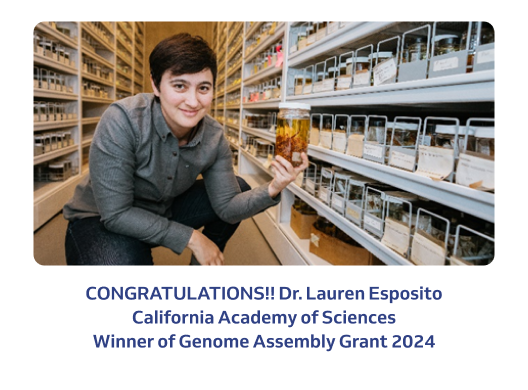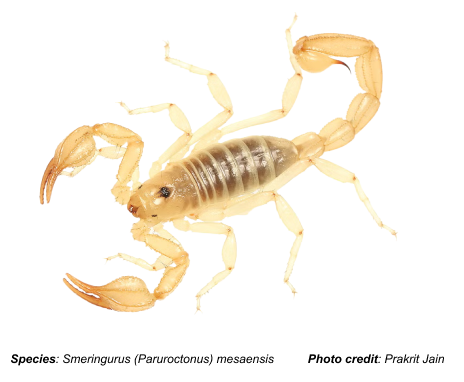MedGenome, a leading genomics-driven research and diagnostics company, in partnership with PacBio is pleased to announce Dr. Lauren Esposito, California Academy of Sciences, as the winner of “2024 de novo genome assembly and annotation grant”.
As a leader in genome assembly and annotation, MedGenome has built AI-enabled bioinformatics tools that uses state-of-the-art technologies including PacBio long reads, Hi-C chromosome conformation capture technology and transcriptomic data, to assemble and annotate reference quality genomes for functional, comparative and evolutionary genomics studies.

Dr. Lauren Esposito is an Assistant Curator and Schlinger Chair of Arachnology at the California Academy of Sciences. She is a leading entomologist recognized globally, specializing in scorpions, and is among the few female experts in the field. Her fascination with entomology ignited in her youth, as she avidly collected insects from her backyard, unknowingly laying the groundwork for her future career. For the past several years, Dr. Esposito has studied the evolution and geographical distribution of scorpions in the Caribbean.

Scorpions have intrigued humans for thousands of years – evidenced through mythology, medicine, and art. While modern scorpions are nearly identical to their amphibious ancestors from 450 mya, scorpions today are incredibly ecologically diverse and found in nearly every major habitat on earth! What we know about “textbook” scorpion biology, from ecology, to behavior, to physiology, is based almost entirely on species endemic to California in the genus Paruroctonus – a genus with no published genome! Without an understanding of the genomic underpinnings of scorpion biology, we can’t begin to unravel the full evolutionary context for their fascinating biology. We propose to sequence and annotate the genome of Smeringurus (Paruroctonus) mesaensis. The genome is ~1.2 Gb, the ploidy is unknown but ranges from 30-100 in related groups, and muscle tissue is available for DNA extraction.

SEQUENCING GENOME OF THE LONGEST-LIVING ANIMAL ON EARTH

INTRINSIC NEURAL ADAPTATIONS IN THE HOODED SEAL

EMPOWERING CONSERVATION MANAGEMENT OF THE MANED WOLF WITH A HIGH-QUALITY ANNOTATED GENOME ASSEMBLY

THE RAINBOW SERPENT: THE GENOMIC BASIS OF COLORATION IN AN INDONESIAN VIPER, TRIMERESURUS INSULARIS

A HIGH-RESOLUTION GUINEA PIG REFERENCE GENOME FOR STUDYING HUMAN PREGNANCY
Fields marked * are mandatory
